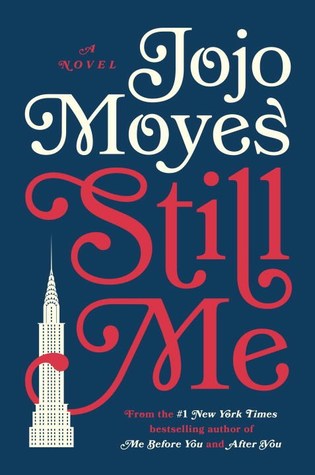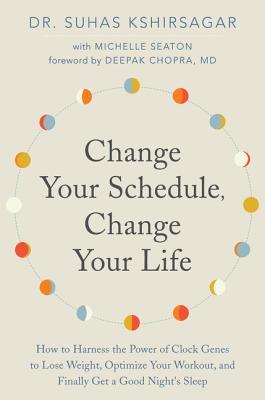
Over the Hills and Far Away: the life of Beatrix Potter by Matthew Dennison
I was so excited to read this book because I love Beatrix Potter, but it was such a depressing, downer of a book. The first 2/3 of the book are basically about how Beatrix's parents were very odd and didn't allow her to have friends or possible suitors, but that helped her focus on her pets and drawing which obviously led to her Peter Rabbit and other animal stories. But, her life sounded so sad and depressing and she had to really fight her parents when she was in her 30's and 40's to buy property and publish her books. She did finally marry when she was 45, but was still expected to care for her aging parents. Just a very sad and depressing book. I liked Beatrix Potter's Gardening Life by Marta McDowell MUCH better. I would NOT recommend this one. I am a huge Beatrix Potter fan and I could barely make myself keep reading this one.

Idaho by Emily Ruskovich
So, is this the new literary fiction thing? To create a seemingly interesting and fascinating storyline that's beautifully written, but go NOWHERE?!?! I had heard such good things about this book and about halfway through I started to get the feeling that all the questions weren't going to be answered - and they are not. Very similar to the writing style/pattern of Our Hearts Will Burn Us Down by Anne Valente. The premise is that Ann and Wade are married and they got married less than a year after a tragedy that left one of Wade's daughters dead, the other missing, and his (now) ex-wife in prison. But, you don't really get much more than that from the next 305 pages. As Wade swiftly declines into dementia, Ann feels like she has to keep the memories of his previous life and family alive somehow, but her character is VERY hard to relate to at all. There is nothing obvious that shows why she is so in love with Wade when from the very beginning of their relationship he was already very much declining mentally. There are NO answers to any questions about the "tragedy" at all. It's a quick read, mainly because you're hoping to find out what really happened, but very much a letdown. I would not recommend this one.

Super Sushi Ramen Express by Michael Booth
After a conversation with a Japanese friend about the merits of Japanese food Michael Booth decides to take his family to live in Japan for 3 months and eat their way through the country. His kids are young (4 and 6) so he's a little worried about what they will think of the food. The beginning of the book is funny and interesting, but over time it just felt like a lot of the same stuff repackaged from chapter to chapter. Go to this area, eat lots of food, meet up with a local expert/chef/etc., try something crazy, move on to the next city/area and repeat. I love reading about food, but as someone who's allergic to most seafood I got frustrated because almost all Japanese food is seafood based and I would never be able to eat most of what he wrote about. I did appreciate the reverence Japan has for food and especially their focus on seasonal, local food - there eating is an experience of all your senses, not just fuel to get you through the day. Booth and his family had an amazing experience that few families would be able to do, but I just felt like the book fell flat for me.

Eight Flavors: the untold story of American cuisine by Sarah Lohman
After high school Sarah Lohman worked at a historical museum that offered "living history" type tours where people could see what everyday life would have been like in 1848 - including the food. Four summers of working there cemented Lohman's interest in both history and food. For her senior year thesis she opened a pop up restaurant that served authentic Revolutionary War-era food. After college she moved to New York City to keep working in the food world. As she continued to study the history of food in America she could see recipes for the same food change over the years. So, she created a timeline of recipes to see what ingredients had entered American food culture and never left and that resulted in this book and the Eight Flavors she explores - black pepper, vanilla, chili powder, soy sauce, garlic, monosodium glutamate (MSG), and sriracha. While some of the flavors seem more associated with other countries around the world Lohman does an amazing job of showing just how these flavors were introduced to America and how they changed our culinary history for the better. This is a really fascinating and unique food book. I was really impressed with her depth of research, while still making the book very readable. There are also LOTS of recipes included - some historic and some modern adaptations. I learned a lot and would definitely recommend this one!
Some quotes I liked:
"Naturally brewed soy sauce has a much older history in the United States than the HVP method does [a non-fermented version of soy sauce]. The first soy sauce manufactured in the Western world was produced in 1767 in Thunderbolt, Georgia, near Savannah, long before the first Chinese and Japanese immigrants arrived. A British immigrant named Samuel Bowen introduced soybeans - today a principal crop in America - for the purpose of making soy sauce...By Bowen's time, the flavor of soy sauce was accepted as an essential flavor of English-descended American cooking. In the eighteenth and early nineteenth centuries, recipes for making soy sauce at home appeared in English and American cookbooks. Since soybeans were not widely available, these recipes used local ingredients such as mushrooms, walnuts, and fish - the latter mimicking fish jiang, or fish sauce." (p. 123-4)
"MSG's main advantage, from an American perspective, was that is made crappy food taste better. The use of MSG in processed food gave it a bad reputation in the second half of the twentieth century. The thought was that if monosodium glutamate was added to bad food, MSG must be bad for you too. It was the opposite of what [Dr. Kikunae] Ikeda had intended, since he dreamed of using it to improve health food." (p. 188)
"As I pieced together the evidence against MSG - scanning through forty-year-old medical studies and news articles - I realized we had developed a fear of 'chemicals' that persists to this day. But this fear has little basis in actual science. Today more scientists, and a small coterie of chefs, are speaking up for this much-maligned chemical...Today there's a double standard when it comes to the perception of MSG. If it's in Chinese takeout, it's called MSG, and it's likened to poison. But when MSG is utilized by high-end American chefs and brands, it's referred to as 'umami,' and it's celebrated as revolutionary." (p. 198)
Some quotes I liked:
"Naturally brewed soy sauce has a much older history in the United States than the HVP method does [a non-fermented version of soy sauce]. The first soy sauce manufactured in the Western world was produced in 1767 in Thunderbolt, Georgia, near Savannah, long before the first Chinese and Japanese immigrants arrived. A British immigrant named Samuel Bowen introduced soybeans - today a principal crop in America - for the purpose of making soy sauce...By Bowen's time, the flavor of soy sauce was accepted as an essential flavor of English-descended American cooking. In the eighteenth and early nineteenth centuries, recipes for making soy sauce at home appeared in English and American cookbooks. Since soybeans were not widely available, these recipes used local ingredients such as mushrooms, walnuts, and fish - the latter mimicking fish jiang, or fish sauce." (p. 123-4)
"MSG's main advantage, from an American perspective, was that is made crappy food taste better. The use of MSG in processed food gave it a bad reputation in the second half of the twentieth century. The thought was that if monosodium glutamate was added to bad food, MSG must be bad for you too. It was the opposite of what [Dr. Kikunae] Ikeda had intended, since he dreamed of using it to improve health food." (p. 188)
"As I pieced together the evidence against MSG - scanning through forty-year-old medical studies and news articles - I realized we had developed a fear of 'chemicals' that persists to this day. But this fear has little basis in actual science. Today more scientists, and a small coterie of chefs, are speaking up for this much-maligned chemical...Today there's a double standard when it comes to the perception of MSG. If it's in Chinese takeout, it's called MSG, and it's likened to poison. But when MSG is utilized by high-end American chefs and brands, it's referred to as 'umami,' and it's celebrated as revolutionary." (p. 198)

Still Me by Jojo Moyes
Still Me follows Louisa Clark across the pond as she chooses to "say yes" to an opportunity to work in New York City. She worries about her relationship with Sam surviving the long-distance and once she's in her new job she quickly realizes she's entered into a whole other world of NYC social elite. Louisa's job is a personal assistant to Agnes Gopnik, which means everything from going with her on her morning runs to helping her get dressed and waiting in the car while she shops. But, being on the inside of a society family Louisa also quickly realizes how many secrets and family skeletons there are to manage as well. Louisa manages to find a unique tribe in New York, including Joshua Ryan who looks remarkably like Will Traynor. When things go wrong in the Gopnik household for Louisa, she finds an unlikely ally and is able to consider what she really wants next for her life - whether in New York or back in London.
This is another great chapter in Louisa Clark's life and it's a much happier book than After You when Louisa is still grieving for Will. This is another great book by Jojo Moyes!

This is another great chapter in Louisa Clark's life and it's a much happier book than After You when Louisa is still grieving for Will. This is another great book by Jojo Moyes!

Change Your Schedule, Change Your Life by Dr. Suhas Kshirsagar
I wasn't sure what to expect with this book, but it was very interesting. Kshirsagar makes the case that our bodies are very much tied to circadian rhythms and when we spend too much time on screens or stay up late, get up early and eat at odd times it wreaks havoc on our bodies and our health. Kshirsagar recommends a few changes to your daily routine that can yield enormous results - this is Ayurvedic medicine. His basic suggestion is to get up at the same time every day - he recommends around 6am, work out for 15-20 minutes (ideally outside), eat a good breakfast, eat your biggest meal of the day at lunch time (preferably around noon), eat dinner before dark (preferably around 6pm), no electronics past 8:30 and in bed no later than 10:30. It doesn't seem like huge changes, but honestly the hardest thing for me would be no TV or electronics past 8:30. Kshirsagar does a great job of sharing the science behind how circadian rhythms work and affect the body, but also sharing stories from clients that he's helped make changes to their schedule with dramatic effects. He also does a great job of giving all this information without sounding preachy or condescending. It just goes to show that we often think working out harder or getting more and more done in a day is what we need when really if we just listen to our bodies we might be able to do less with more to show for it. Definitely an interesting book that I'll be thinking about for awhile.
Some quotes I really liked:
"It's not uncommon to have someone come to me with physical complaints that are also emotional troubles. Your body is a complex instrument that reflects back to you who you are. When you become unhappy, your body talks to you about your unhappiness. The more you ignore your body, the louder it talks." (p. 37)
"In Ayurveda, this is known as a pitta type, and 'pitta' means fire. If this is your sleeping style, you may also have a fiery nature. People may say that you are intense, but from your perspective, you just want to get things done right...you may be strong or muscular by build and have a naturally warm body temperature. When you are intensely focused on a task or when you are in disagreement with someone, your body heats up along with your emotions. You are likely to be task-oriented, someone who makes lists and uses lists all throughout the day to make sure you get things done on time because, if you don't accomplish what you want, you can get frustrated and irritable. This is even true on vacation, where you bring lists of all the things you want to see and experience. You may be a natural leader and a natural public speaker. People listen to you. You can be witty and enterprising and can accomplish almost anything...They often eat late at night, too, because they always need food." (p. 95-6) [this pretty much describes me to a T, except being a natural public speaker]
Some quotes I really liked:
"It's not uncommon to have someone come to me with physical complaints that are also emotional troubles. Your body is a complex instrument that reflects back to you who you are. When you become unhappy, your body talks to you about your unhappiness. The more you ignore your body, the louder it talks." (p. 37)
"In Ayurveda, this is known as a pitta type, and 'pitta' means fire. If this is your sleeping style, you may also have a fiery nature. People may say that you are intense, but from your perspective, you just want to get things done right...you may be strong or muscular by build and have a naturally warm body temperature. When you are intensely focused on a task or when you are in disagreement with someone, your body heats up along with your emotions. You are likely to be task-oriented, someone who makes lists and uses lists all throughout the day to make sure you get things done on time because, if you don't accomplish what you want, you can get frustrated and irritable. This is even true on vacation, where you bring lists of all the things you want to see and experience. You may be a natural leader and a natural public speaker. People listen to you. You can be witty and enterprising and can accomplish almost anything...They often eat late at night, too, because they always need food." (p. 95-6) [this pretty much describes me to a T, except being a natural public speaker]
No comments:
Post a Comment